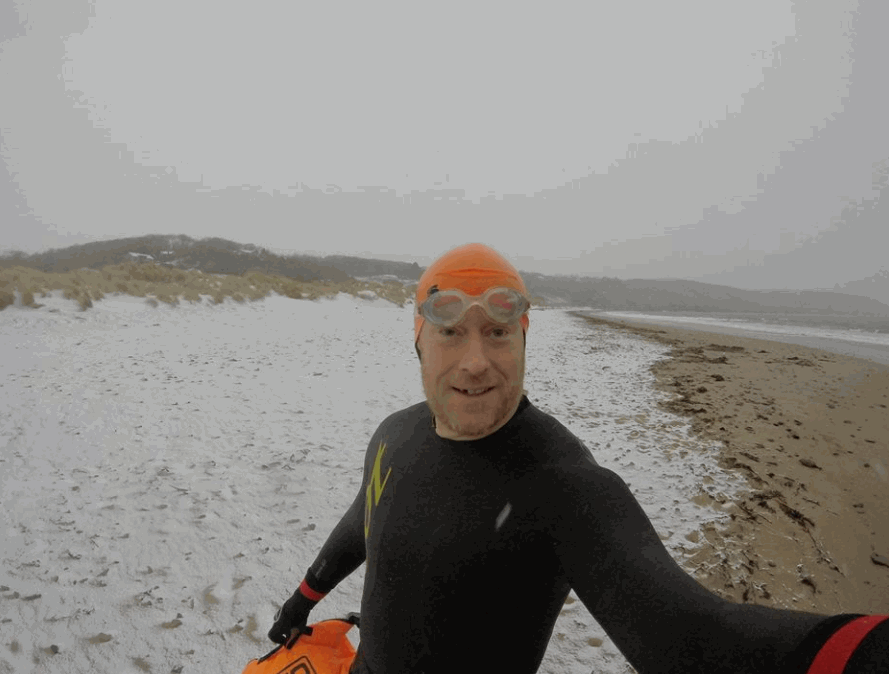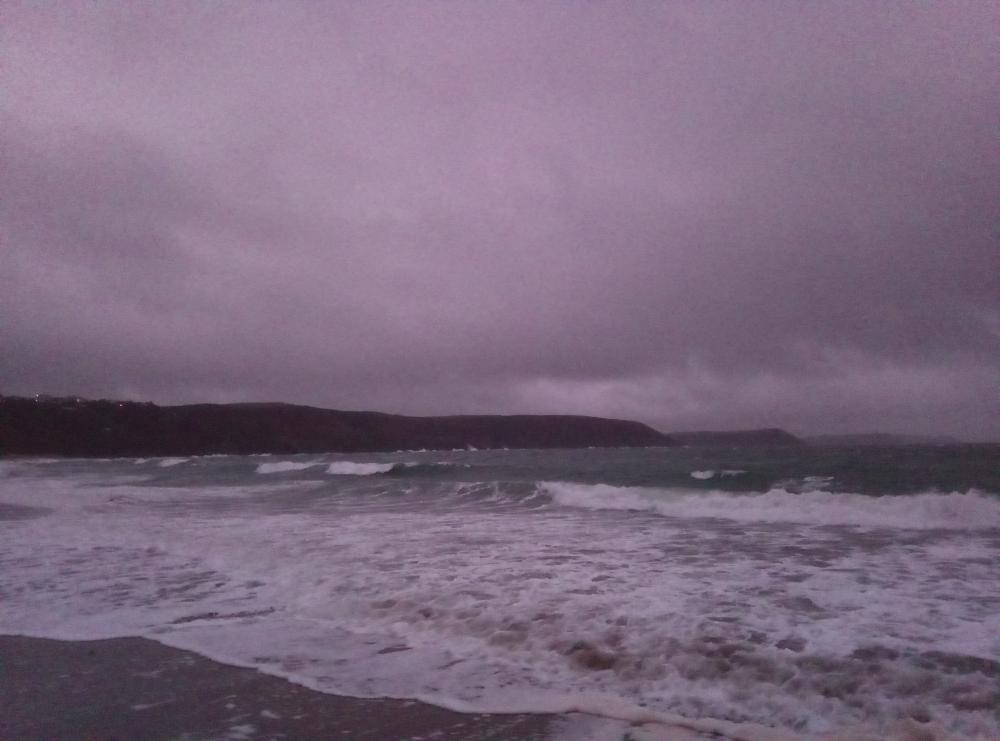I'm a firm believer in the importance of 'conditioning' for any sort of endurance sport, which means conditioning the body and mind to be able to endure tough conditions for longer periods of time through extended exposure to stressful environmental conditions.
These conditions occur naturally and especially frequently here in the UK... You know... Howling wind, sheets of rain, cold, large waves, currents, froth, rips, sand blasting and so on. Even in the height of a British summer!
With regards to sea swimming, either for personal pleasure, or for events like IronMan triathlon, or endurance swimming, replicating these 'stressful conditions' would include:
- Training in as wide a variety of weather and sea conditions as possible
- Training on a year round basis.
- Cold weather training and use of cold weather kit and exposure of the body to the cold.
- Increased distance and endurance training.
I often see very fit athletes performing below their best when the conditions are not perfect, not because they're lacking fitness, but because the same people may not even start swimming in the open ocean until June or even July, and stop again at the end of September as soon as the last race is done.
Compare this to someone who swims all year round, in all weathers, in all conditions. This person is going to have a far higher tolerance to stressful conditions than those who are more choosy in their swim spots or weather. In short, your body becomes more able to tolerate stressful situations and also, importantly, requires less energy to do so.

The effect of stressful conditions on breathing and heart rate cannot be underestimated and you cannot replicate the rigours of sea swimming in the pool.
This is important because you cannot predict the weather or the sea conditions and when put into unfamiliar and stressful situations the first thing your body does is increase the breathing rate and burn oxygen, which will naturally add to the stresses of racing a 2.5 mile open water race or embarking on a 5-10km endurance swim.
The same can be said for breathing techniques when sea swimming. I am often asked 'how frequently should I breathe?' or 'should I breathe both sides?', but this depends on multiple factors and if it's choppy and if you're not conditioned to stressful environmental conditions, then restricting your breathing by breathing every 4 strokes or bilaterally will just compound the rate at which you fatigue.
Swimming in more extreme conditions also requires you to adapt your stroke: Larger waves may call for a more extended arm stroke. Exposure to strong tides or big swells help you to learn how to swim in currents or how to use the waves to save energy. What do you do if your goggle fill up in choppy seas, or you take a wave in the mouth? Or if you see loads of jellyfish?
The more you are exposed to these scenarios the less likely you'll be phased by it if it happens in an event.

While 'conditioning' could be considered an indirect method of achieving better results compared to direct fitness training, or hours of drills and technique practice in a pool, it is definitely something to be considered at all levels of competition and endurance swimming, to help give you that 'edge' and be less dependent on perfect conditions and more focused on the actual swim, employing the rough sea swimming techniques learned during the conditioning practice if you're unlucky with the weather.
